Emergent Elements of Inspiratory Rhythmogenesis: Network Synchronization and Synchrony Propagation
- PMID: 32130872
- PMCID: PMC11221628
- DOI: 10.1016/j.neuron.2020.02.005
Emergent Elements of Inspiratory Rhythmogenesis: Network Synchronization and Synchrony Propagation
Abstract
We assessed the mechanism of mammalian breathing rhythmogenesis in the preBötzinger complex (preBötC) in vitro, where experimental tests remain inconsistent with hypotheses of canonical rhythmogenic cellular or synaptic mechanisms, i.e., pacemaker neurons or inhibition. Under rhythmic conditions, in each cycle, an inspiratory burst emerges as (presumptive) preBötC rhythmogenic neurons transition from aperiodic uncorrelated population spike activity to become increasingly synchronized during preinspiration (for ∼50-500 ms), which can trigger inspiratory bursts that propagate to motoneurons. In nonrhythmic conditions, antagonizing GABAA receptors can initiate this synchronization while inducing a higher conductance state in nonrhythmogenic preBötC output neurons. Our analyses uncover salient features of preBötC network dynamics where inspiratory bursts arise when and only when the preBötC rhythmogenic subpopulation strongly synchronizes to drive output neurons. Furthermore, downstream propagation of preBötC network activity, ultimately to motoneurons, is dependent on the strength of input synchrony onto preBötC output neurons exemplifying synchronous propagation of network activity.
Keywords: breathing; central pattern generator; network dynamics; preBötzinger complex; rhythm; synaptic correlation; synchrony; synfire chain.
Copyright © 2020 Elsevier Inc. All rights reserved.
Conflict of interest statement
Declaration of Interests The authors declare no competing interests.
Figures

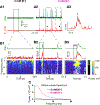
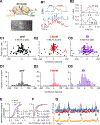

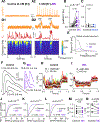
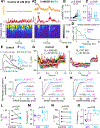
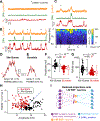

Similar articles
-
Distinct inspiratory rhythm and pattern generating mechanisms in the preBötzinger complex.J Neurosci. 2013 May 29;33(22):9235-45. doi: 10.1523/JNEUROSCI.4143-12.2013. J Neurosci. 2013. PMID: 23719793 Free PMC article.
-
Microcircuit Synchronization and Heavy-Tailed Synaptic Weight Distribution Augment preBötzinger Complex Bursting Dynamics.J Neurosci. 2023 Jan 11;43(2):240-260. doi: 10.1523/JNEUROSCI.1195-22.2022. Epub 2022 Nov 18. J Neurosci. 2023. PMID: 36400528 Free PMC article.
-
Functional Interactions between Mammalian Respiratory Rhythmogenic and Premotor Circuitry.J Neurosci. 2016 Jul 6;36(27):7223-33. doi: 10.1523/JNEUROSCI.0296-16.2016. J Neurosci. 2016. PMID: 27383596 Free PMC article.
-
Respiratory Rhythm Generation: The Whole Is Greater Than the Sum of the Parts.Adv Exp Med Biol. 2017;1015:147-161. doi: 10.1007/978-3-319-62817-2_9. Adv Exp Med Biol. 2017. PMID: 29080026 Review.
-
Breathing Rhythm and Pattern and Their Influence on Emotion.Annu Rev Neurosci. 2022 Jul 8;45:223-247. doi: 10.1146/annurev-neuro-090121-014424. Epub 2022 Mar 8. Annu Rev Neurosci. 2022. PMID: 35259917 Free PMC article. Review.
Cited by
-
The integrated brain network that controls respiration.Elife. 2023 Mar 8;12:e83654. doi: 10.7554/eLife.83654. Elife. 2023. PMID: 36884287 Free PMC article. Review.
-
Opioid suppression of an excitatory pontomedullary respiratory circuit by convergent mechanisms.Elife. 2023 Jun 14;12:e81119. doi: 10.7554/eLife.81119. Elife. 2023. PMID: 37314062 Free PMC article.
-
Transcriptomes of electrophysiologically recorded Dbx1-derived respiratory neurons of the preBötzinger complex in neonatal mice.Sci Rep. 2022 Feb 21;12(1):2923. doi: 10.1038/s41598-022-06834-z. Sci Rep. 2022. PMID: 35190626 Free PMC article.
-
Activation of respiratory-related bursting in an isolated medullary section from adult bullfrogs.J Exp Biol. 2023 Sep 15;226(18):jeb245951. doi: 10.1242/jeb.245951. Epub 2023 Sep 22. J Exp Biol. 2023. PMID: 37665261 Free PMC article.
-
Dentate spikes and external control of hippocampal function.Cell Rep. 2021 Aug 3;36(5):109497. doi: 10.1016/j.celrep.2021.109497. Cell Rep. 2021. PMID: 34348165 Free PMC article.
References
-
- Barlow HB (1961). Possible principles underlying the transformation of sensory messages. In Sensory communication, Rosenblith WA, ed. (Cambridge, MA: The MIT Press; ), pp. 217–234.
Publication types
MeSH terms
Substances
Grants and funding
LinkOut - more resources
Full Text Sources
Other Literature Sources
Molecular Biology Databases

